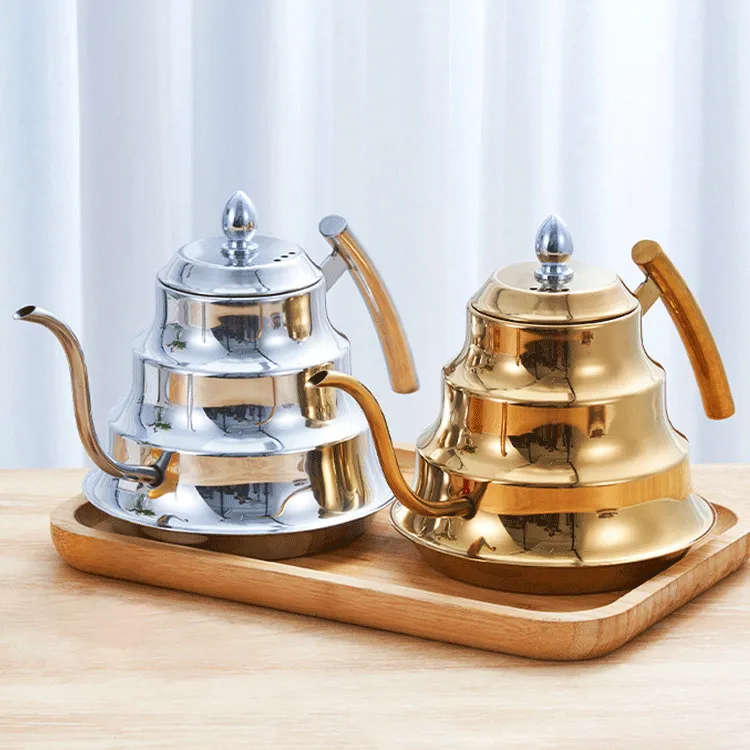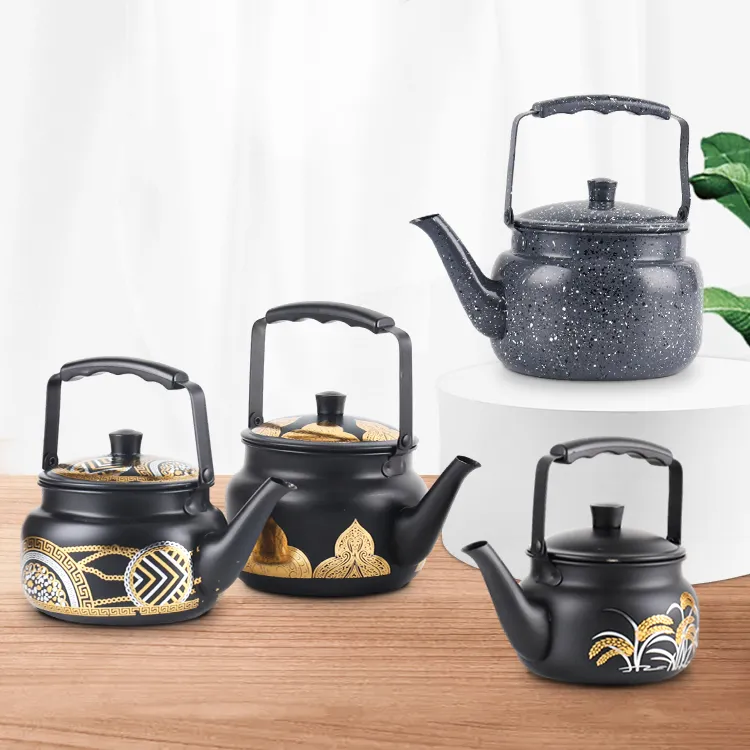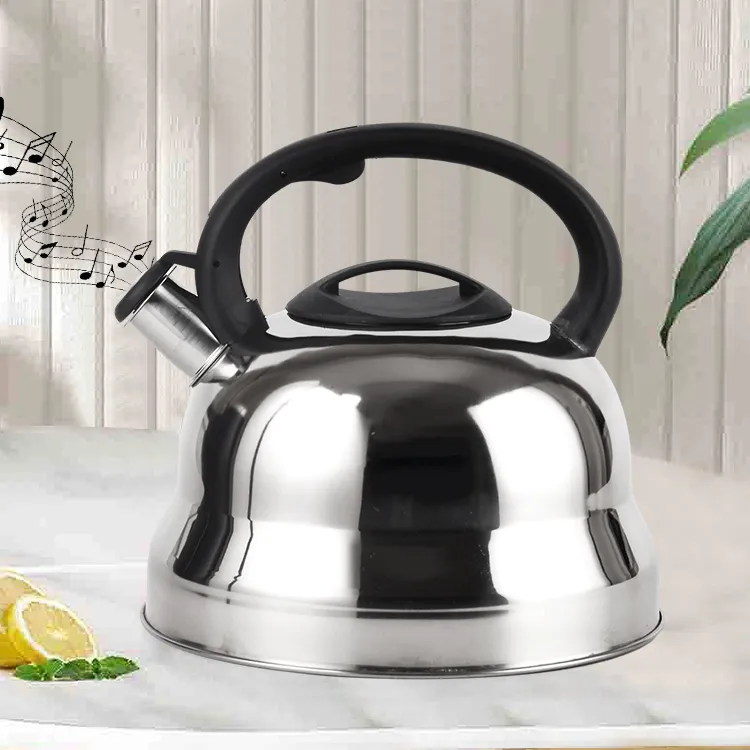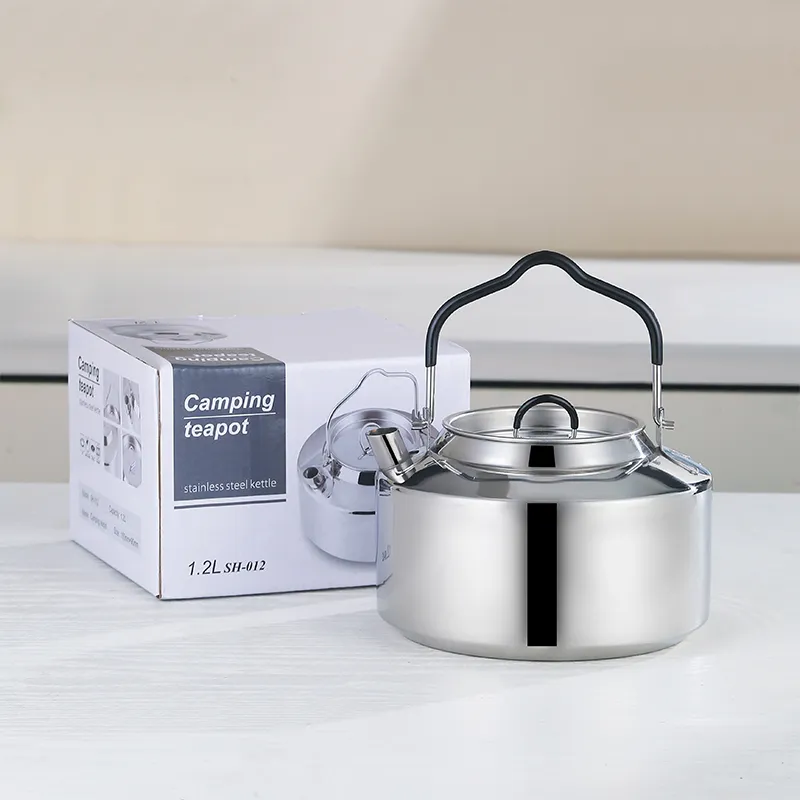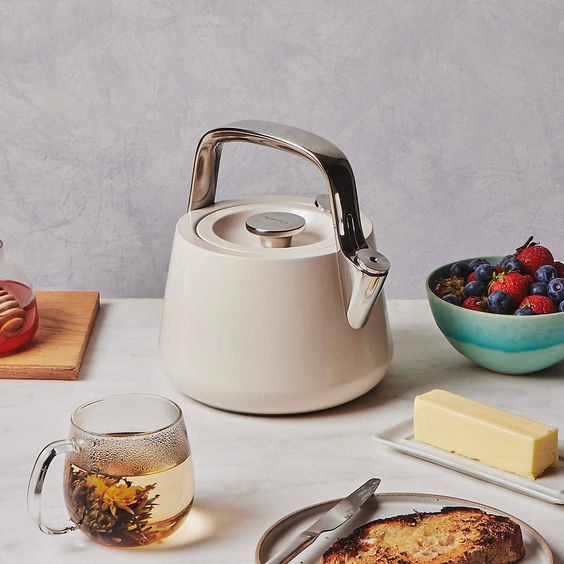
Teapots have been used for centuries as one of the most important utensils for making tea. Teapots not only have a practical function, but also have a profound meaning and a strong cultural background. The teapot occupies an important position in traditional Chinese culture, reflecting the ancient culture of etiquette. For example, in the tea ceremony, the host makes tea for the guest, expressing respect for the guest. In addition, teapots reflect the way people communicate and interact. In China, Japan and the United Kingdom and other countries with a strong tea culture, drinking tea is a way of socializing, people in the process of sipping tea can speak freely to enhance the exchange of ideas.
Whether it is a traditional ceramic teapot, purple clay pot, or modern stainless steel teapot, the correct use of the teapot can maximize the release of tea flavor and taste, but also to extend the life of the teapot. In this article, we will explain in detail how to choose, use and maintain a teapot to help you better enjoy the pleasures of tea culture in your daily life.
Types and selection of teapots
Types of teapots
- Ceramic teapot: Ceramic pots have good air permeability, allowing the flavor of the tea to penetrate better, suitable for brewing Oolong tea, jasmine tea and other fragrant tea.
- Cast iron teapot: cast iron teapot is commonly used to boil water and brew tea, this teapot will form a layer of rust or oxides in the inner wall, as long as the correct use and maintenance of the cast iron teapot, it is possible to use its safe tea.
- Glass teapots: Glass teapots are transparent teapots that are often used to brew tea, allowing the tea leaves and petals to float in the glass and visually feel the beauty of the tea.
- Stainless steel teapot: Stainless steel tea sets are tea drinking utensils made of stainless steel, with a strong and durable shell that is beautiful and easy to use. Stainless steel teapot durable and easy to clean, suitable for modern fast-paced life, especially suitable for large-capacity tea needs. Stainless steel teapot has the advantages of good insulation, hygiene and health, easy to clean, beautiful and practical, etc., very suitable for modern people’s life needs.
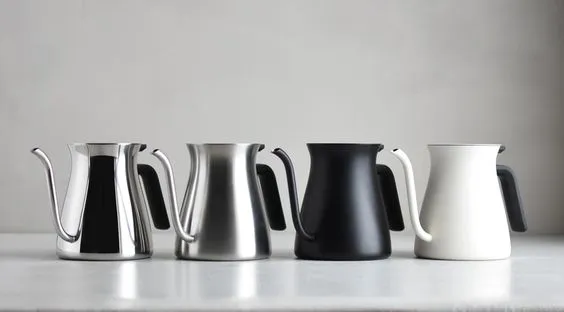
How to choose the right teapot
The following aspects should be considered when choosing a teapot:
- Material: Choose the right material according to the type of tea. For example, green tea and flower tea are suitable for glass teapots, while Oolong tea and Pu’er tea are more suitable for ceramic teapots.
- Capacity: according to the number of tea drinkers and occasions to choose the capacity of the teapot. Generally speaking, 300-500 ml teapot is suitable for family use, while larger capacity teapot should be chosen for party or business occasions.
- Design: The design of the teapot not only affects the ease of use, but also directly affects the effect of tea. The length of the spout, the height of the body and the sealing of the lid should all be carefully considered.
Need to carry out the preparatory work
Clean the teapot
Whether it is a new teapot or a used teapot, it needs to be thoroughly cleaned to ensure a hygienic brewing process and the purity of the tea. To clean a new teapot, soak the new teapot in warm water for about 15-20 minutes to remove any dust and impurities that may have been left over from the manufacturing process. Finally, rinse with clean water, carefully rinsing the teapot inside and out to ensure there is no residual soaking material.
To clean an old teapot, rinse the inside of the teapot with warm water to remove tea scale and residual tea leaves. Then use a clean soft cloth to gently wipe the inside of the teapot to avoid leaving any stains.
Warming the teapot
Before making tea, rinse the inside and outside of the teapot with hot water to warm it up. Warming the teapot helps to enhance the aroma of the tea leaves and prevent the quality of the tea broth from being affected by the temperature difference. First, pour boiling water into the teapot, shake it gently for a few seconds and then pour it out to make sure the inside of the teapot is warm. Next, rinse the outside of the teapot with boiling water so that the entire teapot is evenly heated.
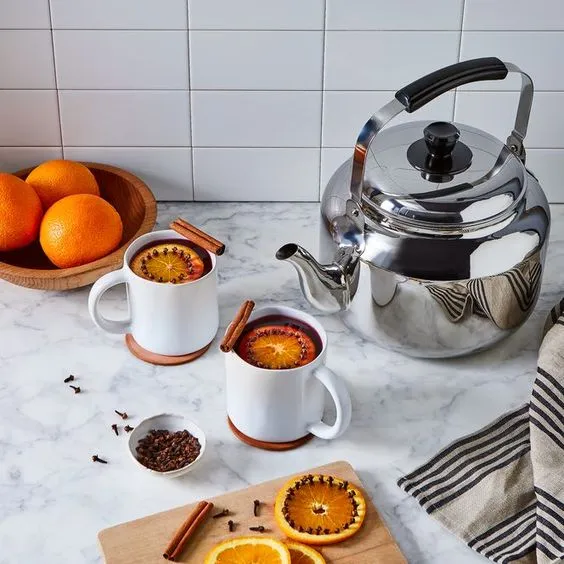
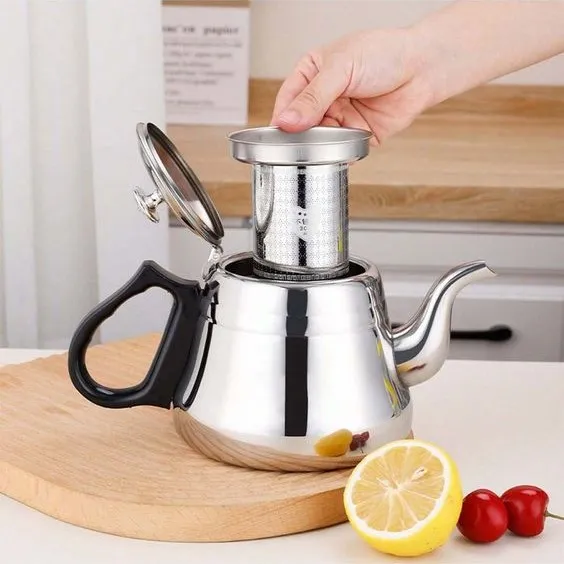
How to use a teapot to make tea
Selecting tea leaves
The first step in making tea is to choose the right tea leaves. Common types of tea include green tea, black tea, Oolong tea, Pu’er tea, white tea and flower tea. Different teas have their own characteristics and suitable brewing methods. Green tea is fresh and refreshing, black tea is rich and sweet, Oolong tea has a strong aroma, Pu’er tea tea is raw and ripe, white tea is light and sweet, and flower tea has a floral flavor.
Choice of water
The quality of water used for tea brewing has an important impact on the taste of tea soup. Choose high-quality mineral water or filtered water, and avoid using hard water. Different tea leaves have different requirements on water temperature: green tea with 80-85℃ water, black tea and Oolong tea with 90-95℃ water, Pu’er tea) with 85-95℃ water depending on whether it is raw or cooked, white tea with 80-85℃, and floral tea with 85-90℃.
Prepare tea utensils and tea leaves
According to the type of tea and personal taste, put the right amount of tea leaves into the teapot, generally 2-3 g of tea leaves per 100ml of water, which can be adjusted according to the type of tea. You can use a tea strainer to filter the tea residue, or use a tea bag for easy brewing. Before brewing, wash the tea utensils with hot water and preheat the teapot to help enhance the aroma of the tea.
Brewing steps
For some fermented teas (e.g. Oolong tea, Pu’er tea), you can first rinse the tea leaves with a small amount of boiling water and pour it out quickly to remove impurities on the surface of the tea leaves. Slowly and evenly fill the teapot with water and cover the lid to keep the heat in. Control the brewing time, which varies for different teas: 1-2 minutes for green tea, 3-5 minutes for black tea and Oolong tea, 2-5 minutes for Pu’er tea depending on the type, 4-5 minutes for white tea, and 3-5 minutes for flower tea.
Pouring tea
After brewing the tea, pour the tea broth into a fair cup and then into teacups to ensure an even concentration in each cup. Pouring tea should pay attention to the etiquette, according to the order of the guests in order to pour tea, the amount of moderate, should not be too full.
The teapot cleaning and maintenance
Daily cleaning
Daily cleaning of the teapot is very important, directly affecting the service life of the teapot and the effect of tea. Immediately after each use, rinse the inside and outside of the teapot with water to ensure that no tea residue. The inner wall of the teapot to avoid the use of detergents, so as not to residual impact on the original flavor of the tea, you can use warm water or gently scrub with a soft cloth.
Deep Cleaning
Teapot use for a period of time, the need for deep cleaning, for ceramic and glass teapots, you can use baking soda or white vinegar soaked in water for half an hour, and then rinse with water. And for stainless steel in teapots, pour equal amounts of white vinegar and water, or mix baking soda and warm water in the teapot, and let the cleaning solution soak for 15-30 minutes to soften the tea scale. Gently brush the inside of the pot with a soft brush, especially in the corners. Rinse the teapot thoroughly with clean water to ensure the cleaning solution is completely removed.
Maintenance Tips
To prevent the teapot from rusting and getting damaged, make sure the teapot is completely dry before storing. Place the teapot in a ventilated area to dry and place a small amount of desiccant (e.g. silica gel desiccant packet) inside to absorb any residual moisture. Store the teapot in a well-ventilated area to avoid humid conditions. Wrap the teapot in a clean, soft cloth or towel to prevent dust accumulation and bump damage, and place the teapot separately from the lid to ensure air circulation and prevent mold.
Selection and Use of Commercial Teapots
When choosing a commercial teapot, stainless steel teapots have become the preferred choice of the food service industry due to their unique characteristics and multiple advantages. First of all, stainless steel is strong and durable, able to withstand frequent use and a variety of environmental conditions, not easy to deformation or damage. This is especially important for the catering industry, stainless steel teapot can maintain its functionality and aesthetics for a long time, reducing the frequency and cost of replacement.
In addition, the corrosion resistance of stainless steel teapots is also one of its major advantages. Stainless steel has good corrosion resistance to tannins and other chemicals in tea, avoiding the problem of corrosion and discoloration of the inner wall of the teapot. This not only ensures the hygiene of the teapot, but also maintains the pure taste of the tea.
Stainless steel teapots also excel in thermal insulation performance. The double-layer stainless steel structure can effectively keep the heat, for the catering industry, especially the need to serve hot tea for a long time occasions, stainless steel teapot insulation performance can greatly improve the quality of service and customer satisfaction.
The aesthetics and diverse designs of stainless steel teapots also make them highly desirable in commercial environments. Modern craftsmanship makes stainless steel teapots not only functional, but also elegant in design. Different capacities, shapes and decorative styles are available to meet the needs of different dining occasions and enhance the overall dining experience.
الخاتمة
Stainless steel teapots are ideal for commercial teapots due to their durability, corrosion resistance, heat retention, aesthetics, and ease of cleaning. And Allnice, as a leading stainless steel catering manufacturing wholesaler, advanced production process and strict quality control system make our products highly competitive in the market. Secondly, with a rich product line, we are able to provide diversified product choices according to customers’ needs, ranging from small teapots to large-capacity teapots.
Through high-quality products, diversified choices, خدمات مخصصة and perfect after-sales support, we are able to efficiently accomplish both personalized design, brand customization, and mass production. In addition, our service team solves problems encountered by customers during the process of use, ensuring customer satisfaction and long-term cooperation. It further enhances the value of stainless steel teapot application and customer satisfaction in the catering industry.

